Search
Summary
Loading AI-generated summary based on World History Encyclopedia articles ...
Answers are generated by Perplexity AI drawing on articles from World History Encyclopedia. Please remember that artificial intelligence can make mistakes. For more detailed information, please read the source articles
Search Results

Video
Ara Pacis Augustae (Altar of Augustan Peace), 13-9 B.C.E. (Rome)
More free lessons at: http://www.khanacademy.org/video?v=kiMNT18c4Ko Ara Pacis Augustae (Altar of Augustan Peace), 13-9 B.C.E. Speakers: Dr. Beth Harris & Dr. Steven Zucker On Smarthistory: http://smarthistory.khanacademy.org/ara-pacis.html...

Video
House Altar Depicting Akhenaten, Nefertiti and Three Daughters
More free lessons at: http://www.khanacademy.org/video?v=ryycDVWXDvc House Altar depicting Akhenaten, Nefertiti and Three of their Daughters, limestone, New Kingdom, Amarna period, 18th dynasty, c.1350 BCE (Ägyptisches Museum/Neues Museum...

Video
Great Altar of Zeus and Athena at Pergamon
The Pergamon Altar, c. 200-150 BCE, 35.64 x 33.4 meters, Hellenistic Period (Pergamon Museum, Berlin).
Speakers: Dr. Steven Zucker and Dr. Beth Harris.
Created by Beth Harris and Steven Zucker.

Definition
Fire Temple
Fire Temples are places of worship in the Zoroastrian religion. They were known as ataskada (“house of fire”) by the Persians but are best known today by their Greek name pyratheia (fire temple). They are thought to have originated from the...
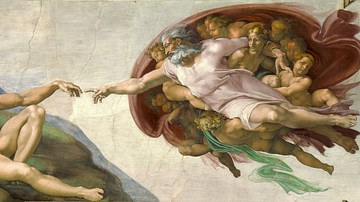
Article
Michelangelo's Sistine Chapel Ceiling
In 1508 CE the Pope commissioned the celebrated Florentine sculptor and painter Michelangelo (1475-1564 CE) to paint scenes on the ceiling of the Vatican's Sistine Chapel. The walls of the chapel had already received decoration from some...
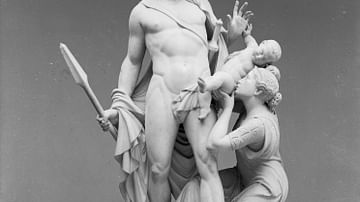
Definition
Andromache
Andromache is a Greek tragedy written by Euripides (c. 484-407 BCE), one of only 19 plays (out of 92) to survive. The play is actually in two parts, and like Sophocles' Women of Trachis, it has no central character. The first part...
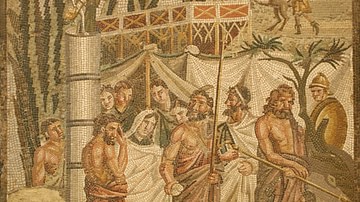
Definition
Iphigenia in Aulis
Iphigenia in Aulis (or at Aulis) was written by Euripides, the youngest and most popular of the trilogy of great Greek tragedians. The play was based on the well-known myth surrounding the sacrifice of Agamemnon and Clytemnestra's daughter...
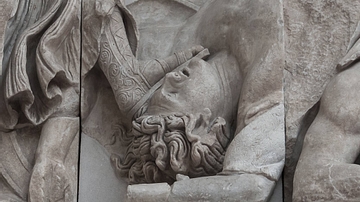
Image
Aphrodite Killing the Giant
Detail from the Pergamon Altar's north frieze (The frieze depicts the Gigantomachy); Aphrodite killing the giant; built in 2nd century BCE; Today in the Pergamon Museum in Berlin.
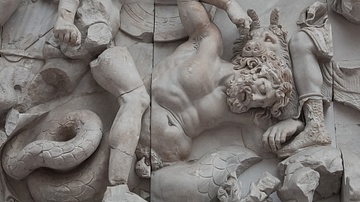
Image
The Giant Killed by Artemis
The giant is killed by Artemis' dog (Artemis' leg on right); Detail from the Pergamon Altar's frieze (The frieze depicts the Gigantomachy); built in 2nd century BCE; Today in the Pergamon Museum in Berlin.
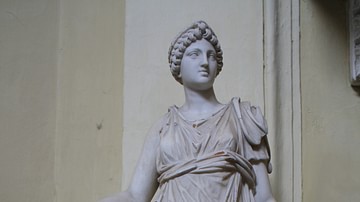
Article
Hygieia, the Goddess of Health
Modern medicine has its origin in the ancient world. The oldest civilizations used magic and herbs to cure their sick people, but they also used religion to free them from harm and to protect their health. The medical care of today has its...